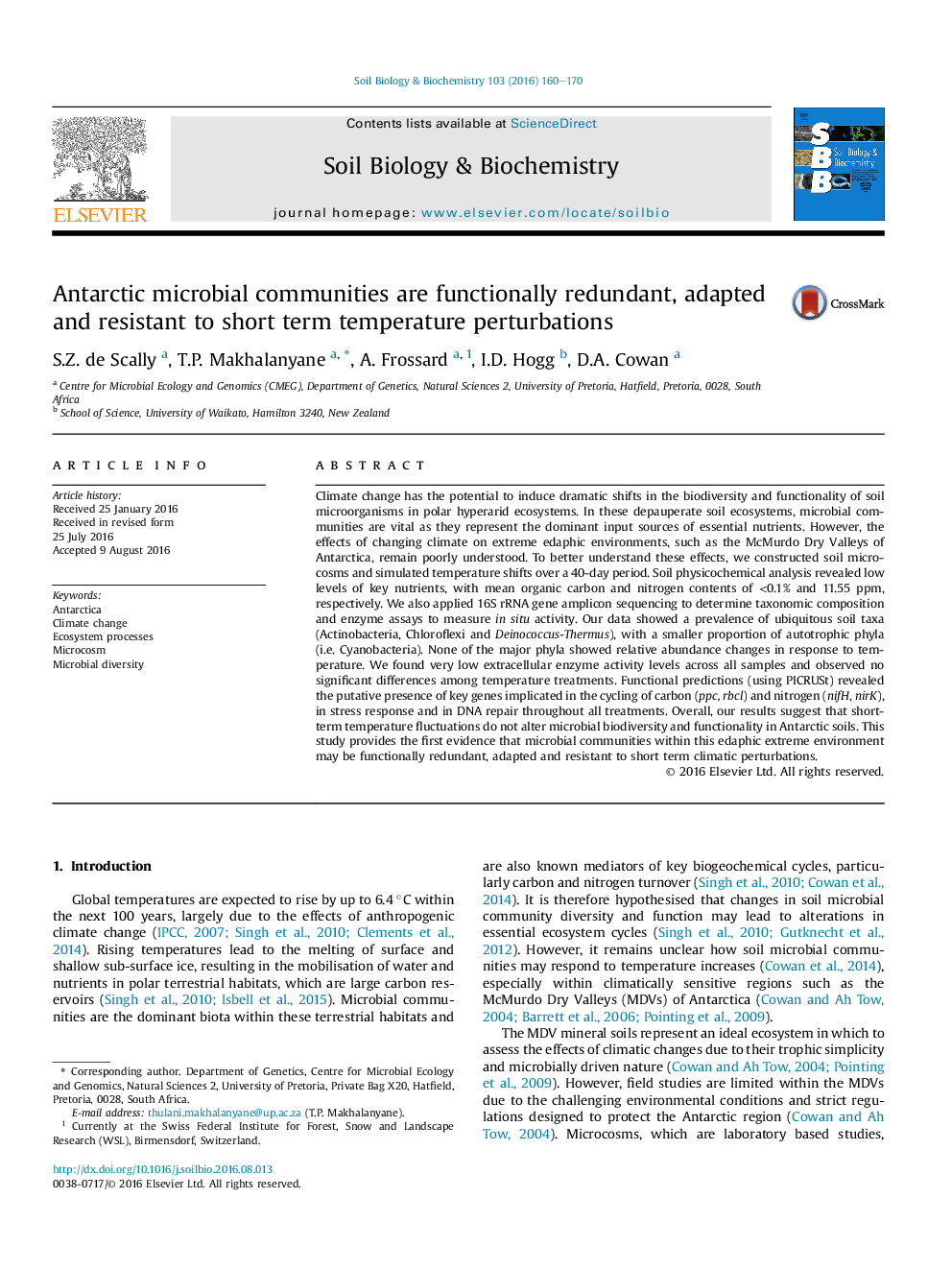| Article ID | Journal | Published Year | Pages | File Type |
|---|---|---|---|---|
| 8363225 | Soil Biology and Biochemistry | 2016 | 11 Pages |
Abstract
Climate change has the potential to induce dramatic shifts in the biodiversity and functionality of soil microorganisms in polar hyperarid ecosystems. In these depauperate soil ecosystems, microbial communities are vital as they represent the dominant input sources of essential nutrients. However, the effects of changing climate on extreme edaphic environments, such as the McMurdo Dry Valleys of Antarctica, remain poorly understood. To better understand these effects, we constructed soil microcosms and simulated temperature shifts over a 40-day period. Soil physicochemical analysis revealed low levels of key nutrients, with mean organic carbon and nitrogen contents of <0.1% and 11.55Â ppm, respectively. We also applied 16S rRNA gene amplicon sequencing to determine taxonomic composition and enzyme assays to measure in situ activity. Our data showed a prevalence of ubiquitous soil taxa (Actinobacteria, Chloroflexi and Deinococcus-Thermus), with a smaller proportion of autotrophic phyla (i.e. Cyanobacteria). None of the major phyla showed relative abundance changes in response to temperature. We found very low extracellular enzyme activity levels across all samples and observed no significant differences among temperature treatments. Functional predictions (using PICRUSt) revealed the putative presence of key genes implicated in the cycling of carbon (ppc, rbcl) and nitrogen (nifH, nirK), in stress response and in DNA repair throughout all treatments. Overall, our results suggest that short-term temperature fluctuations do not alter microbial biodiversity and functionality in Antarctic soils. This study provides the first evidence that microbial communities within this edaphic extreme environment may be functionally redundant, adapted and resistant to short term climatic perturbations.
Related Topics
Life Sciences
Agricultural and Biological Sciences
Soil Science
Authors
S.Z. de Scally, T.P. Makhalanyane, A. Frossard, I.D. Hogg, D.A. Cowan,
